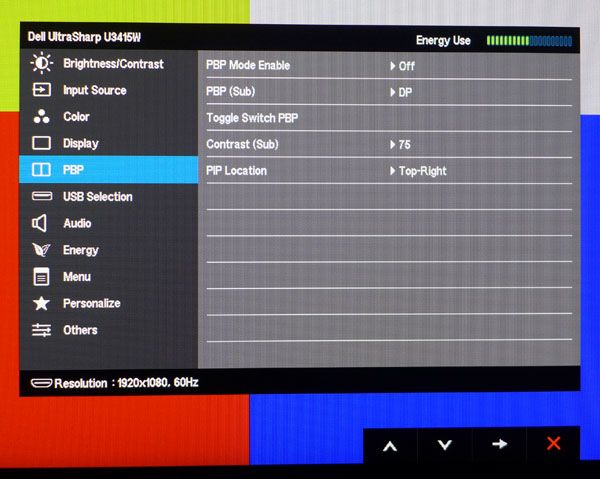

Pixel Cleaning – detects and corrects pixel degradation if needed the process takes around 6 minutes.Screen Saver – the screen automatically dims when no movement is detected.Under Screen Protection in System Setup of the monitor’s OSD menu, you’ll find the following features: Sadly, ASUS’ 2-year warranty doesn’t cover burn-in, whereas Dell’s 3-year warranty for their QD-OLED ultrawide models does.
DELL U2410 CALIBRATION WITH DISPLAYCAL FREE
You can also find plenty of free and useful apps, such as AutoHideDesktopIcons. Hiding your taskbar in Windows, using dark modes, hiding unnecessary HUD in games where possible, etc. If you plan on using the screen for color-critical or productivity work where you’ll have static elements displayed for hours without being able to play any other content in between, OLED might not be for you.įor gaming, content consumption and mixed-use, there’s no need to worry about burn-in as long as you’re using the monitor sensibly and use the built-in burn-in prevention features.

If you leave an image with bright static elements on the screen for too long, an afterimage of that element could become permanently visible.įor some people, this drawback is a fair trade-off for the image quality and performance you get, but for others, it can be deal-breaking. While there are higher resolution OLED panels announced, we most likely won’t see them available until 2025.Īnother downside of OLED panels is the risk of permanent image burn-in and temporary image retention. Of course, for other use, a higher resolution would be more beneficial, including making the text fringing less noticeable due to higher pixel density. The difference in image quality in games and videos is not that noticeable, while 1440p is significantly less demanding on the GPU, allowing for higher picture settings and/or higher frame rates. This is an issue with all monitors using LG’s W-OLED panels, and Samsung’s QD-OLED panels have a similar problem due to their triangular subpixel layout.Ī lot of users would’ve preferred to see 4K resolution at this screen size, but we find that 1440p is perfectly fine. You can use Better ClearType Tuner to improve this a bit in some applications, but it can’t be completely fixed until we get proper OS support for panels with this subpixel layout. We recommend using Standard Mode since Power Saving has limited brightness performance. When you turn on the monitor for the first time, you’ll need to choose between Standard Mode and Power Saving Mode. Note that we’re using the latest MCM103 firmware for testing.
DELL U2410 CALIBRATION WITH DISPLAYCAL PRO
For testing, we’re using the Datacolor SpyderX Pro colorimeter and Displa圜AL software. We’ll get into HDR brightness later in the review.įirst, we’ll take a look at the image accuracy of the default settings (the ‘Racing Mode’ GameVisual picture preset) and see if any adjustments need to be made. However, the ASUS PG27AQDM can easily maintain ~250-nits in SDR, which we find to be more than bright enough under normal lighting conditions. One of the main drawbacks of OLED displays is that they cannot get as bright as some LED-backlit screens. The monitor is also factory calibrated at Delta E < 2, which makes it ready for color-critical work right out of the box. The two main strengths of OLED panels include the infinite contrast ratio for true blacks and the instantaneous pixel response time speed for buttery-smooth performance with no visible trailing behind fast-moving objects.įurther, the ASUS PG27AQDM has a wide ~99% DCI-P3 gamut coverage for vibrant colors, true 10-bit color depth for excellent gradient handling and 178° wide viewing angles, allowing the image to remain basically the same regardless of the angle you’re looking at the screen. Unlike LG’s 27GR95QE model, the ASUS PG27AQDM features an integrated heatsink for a bit higher brightness but it lacks HDMI 2.1 support. The ASUS ROG Swift PG27AQDM is a 27″ 1440p 240Hz gaming monitor based on LG’s W-OLED panel, promising both responsive gameplay and immersive HDR viewing experience.


 0 kommentar(er)
0 kommentar(er)
